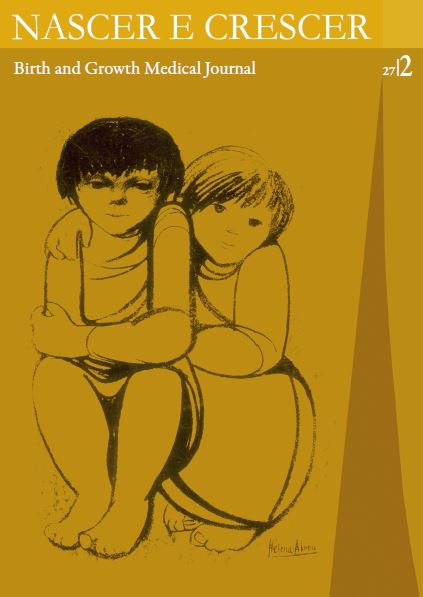Dermatology case
DOI:
https://doi.org/10.25753/BirthGrowthMJ.v27.i2.10371Keywords:
Paediatrics, sexual abuse, vulvar lichen sclerosusAbstract
The authors describe the case of a five-year-old girl, observed in Paediatric Dermatology Clinic due to a blood crust and vulvar ecchymosis associated with local pruritus. The observation revealed of a symmetrical and well defined white plaque around the vagina and anus, with mucocutaneous atrophy associated with the absence of labia minora and vascular purpura on the wishbone and clitorial hood. These findings were suggestive of vulvar lichen sclerosus. The aspects present in this entity can be easily confused with sexual abuse, reason why it is important to alert the Paediatricians and General Practice Doctors to the existence and the diagnostic features of this entity.
Downloads
References
Powell J, Wojnarowska F. Childhood vulvar lichen sclerosus: an increasingly common problem. J Am Acad Dermatol 2001; 44:803-6.
Cooper SM, Arnold SJ. Vulvar lichen sclerosus. UpToDate, accessed in December 2016.
Jensen LS, Bygum A. Childhood lichensclerosus is a rare but important diagnosis. DanMed J 2012; 59:A4424.
Tavares E, Martins C, Teixeira J. Dermatoses Vulvares Inflamatórias. Revista da SPDV. 2011; 69:561-71.
Neill SM, Lewis FM, Tatnall FM, Cox NH; British Association of Dermatologists. British Association of Dermatologists’ guidelines for the management of lichen sclerosus 2010. Br J Dermatol. 2010; 163:672-82. doi: 10.1111/j.1365-2133.2010.09997.x.
Bechtek K, Bennett BJ. Evaluation of sexuak abuse in children and adolescents. UpToDate, accessed in December 2016.
Downloads
Published
How to Cite
Issue
Section
License
Copyright and Authors' Rights
All articles published in Nascer e Crescer - Birth and Growth Medical Journal are Open Access and comply with the requirements of funding agencies or academic institutions. For use by third parties, Nascer e Crescer - Birth and Growth Medical Journal adheres to the terms of the Creative Commons License "Attribution - Non-Commercial Use (CC-BY-NC)".
It is the author's responsibility to obtain permission to reproduce figures, tables, etc. from other publications.
Authors must submit a Conflict of Interest statement and an Authorship Form with the submission of the article. An e-mail will be sent to the corresponding author confirming receipt of the manuscript.
Authors are permitted to make their articles available in repositories at their home institutions, provided that they always indicate where the articles were published and adhere to the terms of the Creative Commons license.


